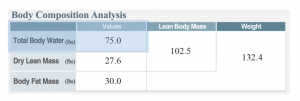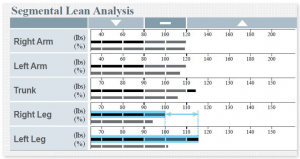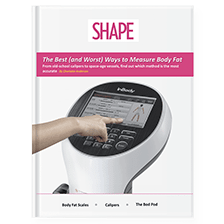Cirque du Soleil’s body composition analysis results used as a means to improve training methods
Cirque du Soleil is one of the most famous, striking and dramatic mix of circus arts. The company’s unique imagination, creativity, set design and audience involvement revolutionalised the traditional sense of the circus. It formed in the early 1980’s with a group of people who wanted to perform in alternative methods and little by little, came to a vision of the modern circus as we know it today. Now, into its fourth decade, the brand has expanded in a wide range of creative endeavours, internationally.
To ensure their talented performers can withstand the workload of performing an incredible 476 shows per year on average, the Cirque du Soleil team needed a reliable way to ascertain the body composition of its athletes to better support training and performance.
Head of performance science for Cirque du Soleil, Bryan Burnstein researched numerous body composition analysers and ultimately decided on tracking body composition using InBody. He felt it delivered the most value to his artists and operations teams. See how InBody helped some of the world’s most talented actors, singers, and artists become more durable performers by optimizing their body composition.

– Photo Martin Girard / shootstudio.ca
Researching methods to better support performers
Exercise has immediate and gradual effects on the body, the main physical benefit brought on by training, is the improvement of body composition. It is an indicator for not only improved muscle mass, decreased body fat but also bone mineral content and water ratios within the body. Cirque du Soleil artists perform daily, occasionally multiple times per day, and can undertake on average 476 shows per year. In addition to performances, these athletes train for around 2-hours per day to maintain peak physical performance and mobility. That level of training and performance, can takes its toll on the human body.
In order to ensure the performers were well supported, the leadership team sought out ways on how they could track and measure the impact of exercise in the long run. Head of Performance Science Bryan Burnstein decided on InBody’s patented technology, as the precise data would be able to drive insights his team could utilise and apply. Burnstein noted, “I was confident in InBody when I studied the literature behind the product.”
“Once I had the opportunity to try one out, I was quite satisfied with what we were getting.”
-Bryan Burnstein, Head of Performance Science at Cirque du Soleil
Enhancing the development of strength and conditioning programs
At regular intervals, data is obtained using the InBody Body Composition Analyser, to determine if any composition changes occurred in each of the performers. The specific information derived from the analyser drives improvements and changes to each performers strength and conditioning programs, allowing them to further enhance their skills. The initial data obtained, is used as a benchmark which was continually matched against to determine the progress against established goals.
In particular, the Performance Science team looks at a performer’s body water fluctuations. This is monitored in-between shows to determine hydration levels, especially if the artists are losing too much sweat during a performance.

Basal Metabolic Rate (BMR) represents the amount of energy your body needs to maintain general body function (heart beating, blood pumping etc.). The data derived from InBody scans, provides the Cirque du Soleil team with the right tools to support their performers with better nutritional guidance. Using BMR, along with a better understanding of the performers’ workload, the Performance Science team can provide the performers with appropriate guidance on how they can regulate their food intake and conditioning levels.

InBody results not only assist in the general development of performers but also supports them on the road to recovery after an operation or injury. Segmental Lean Analysis data shows what muscular change has happened when a performer undergoes an injury and helps them monitor the changes during the reintegration cycle to help build the body back.

This data also allows Cirque du Soleil’s Performance Science team to help with identifying asymmetries/imbalances and investigating why these may exist. If these are present, the data is used to help adapt the conditioning programs that are in place if needed.
Burnstein noted the difference after they started using these data points:
“Having an optimal body composition actually makes them more durable.”
Measuring body composition has, and will continue to be, valuable to the organization. It allows them to continually support the availability, durability, and longevity of each of their performers.
Moving from the traditional scales to Body Composition Analysis
Previously, the industry used to track weight, using traditional scales, as an indicator for success. However, these empirical measurements were not the right fit for each performer as skeletal muscle mass varied greatly. However, now with the introduction of the body composition analyser, conversations revolve around optimal body composition instead of just weight. It looks at the individual for exactly what they are made up of instead of a defined data set.
As an example, previous aerialists had a hard time sustaining a high level of performance. This was attributed to not being able to maintain a specific target weight for their body composition as they were not consuming the right amount of energy for the required BMR.
Through the introduction of body composition analysis, the Cirque du Soleil team ascertained that the performers target body weight was too low. This data was used to improve lean body mass, which meant increasing total weight, and the outcome was a stronger and more durable performer.
Burnstein recalled:
“By bringing the target weight up a little higher and adding a bit of lean body mass we actually enhanced the performance.”
Optimizing performers’ body composition helped them look beyond an arbitrary number on a scale and instead focus on performance-enhancing measures like skeletal mass and lean body mass.
Burnstein summed up the impact body composition analysis has had on Cirque du Soleil’s team of elite athletes:
“Now we have engaging conversations about (body composition analysis) that lead us to positive outcomes.”

